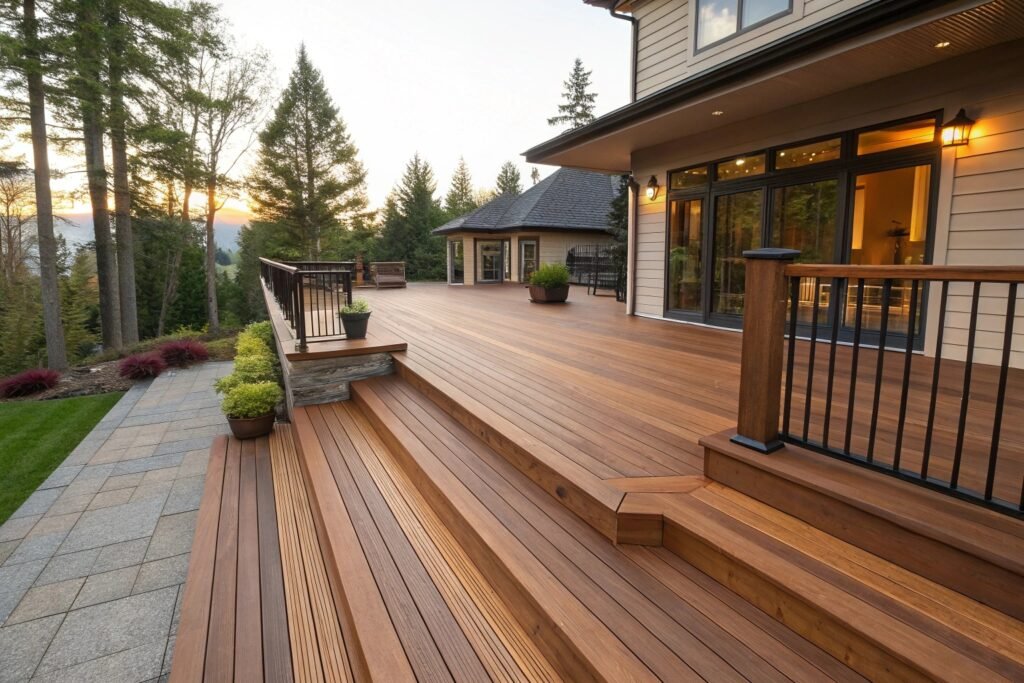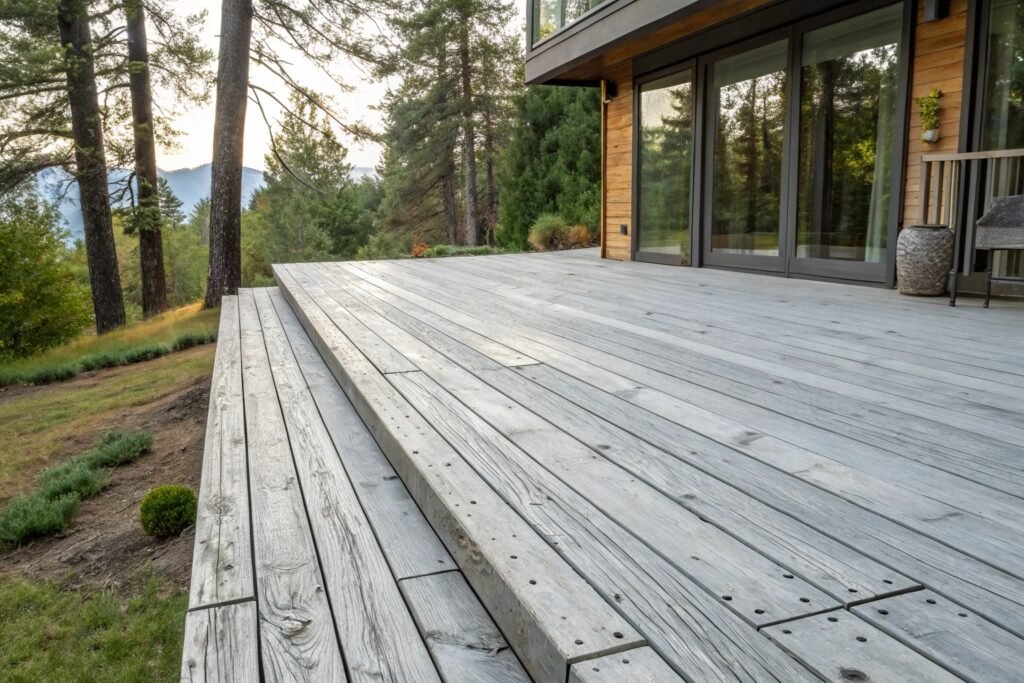Choosing the right material for your deck can be challenging with so many options available. Cedar and composite decking both offer unique benefits, but they have significant differences in terms of durability, maintenance, and environmental performance.
Cedar decking is known for its natural beauty and classic appeal, while composite decking offers long-lasting performance with minimal upkeep.

Having worked with both materials on various decking projects, I’ve seen the pros and cons firsthand. Let’s compare the two and help you choose the best option for your outdoor space.
Which is better, cedar or composite decking?
Choosing between cedar and composite decking depends on your priorities—whether you value the natural look of wood or the durability and low-maintenance of composite materials.

Cedar Decking:
- Aesthetic: Offers a classic, warm wood appearance with rich tones and a beautiful grain pattern.
- Natural Material: Environmentally friendly, as cedar is a renewable resource.
- Maintenance: Requires regular maintenance, including staining and sealing to prevent weathering and rot.
- Durability: While durable, it’s susceptible to moisture and insect damage over time, especially without proper care.
What are the disadvantages of cedar decking?

While cedar decking is popular for its natural beauty, it does have several drawbacks:
High Maintenance: Cedar needs to be regularly sealed and stained to prevent damage from moisture, UV rays, and insects. Without maintenance, it can rot, warp, or lose its color.
Susceptible to Weathering: Over time, exposure to the elements causes cedar to fade to a silver-gray color. Without sealing, this process accelerates.
Insect and Rot Vulnerability: While cedar naturally resists some pests and rot, it is not immune. It can be prone to insect infestations and decay if left untreated.
Cost: Cedar is often more expensive than pressure-treated wood, and the ongoing maintenance costs add to the overall investment.
What is the downside of composite decking?

Composite decking offers several advantages, but it’s not without its own downsides:
Higher Initial Cost: Composite decking typically comes with a higher upfront cost compared to cedar. However, it balances this with lower long-term maintenance costs.
Heat Retention: Composite decking can become quite hot under direct sunlight, making it uncomfortable to walk on in the summer, especially with dark-colored decking.
Color Fading: Over time, composite decking may fade due to UV exposure, although newer products are engineered to resist fading better than older generations.
Not Completely Natural: While composite decking mimics wood, it’s made from recycled plastics and wood fibers, so it doesn’t offer the same aesthetic appeal as real wood.
Environmental Impact: Although composite decking is made from recycled materials, it’s still plastic-based, which raises concerns about the long-term environmental impact of production and disposal.
What are the negatives of cedar?
Cedar has its charm, but it’s important to consider its potential drawbacks:
Maintenance: Cedar requires ongoing care, such as annual sealing or staining, to maintain its appearance and protect it from the elements.
Prone to Splitting: Cedar is relatively soft compared to other woods, making it more susceptible to splitting or cracking over time, especially under heavy use.
Shorter Lifespan: Without proper maintenance, cedar may not last as long as composite decking or pressure-treated lumber.
Rot and Insect Damage: While cedar resists some moisture and pests naturally, it’s still prone to rot and insects, particularly in humid climates.
Conclusion
The decision between cedar and composite decking ultimately depends on your preferences and the amount of time and effort you’re willing to put into maintaining your deck:
- Choose cedar if you love the natural wood look and are prepared to maintain it regularly.
- Opt for composite decking if you want a low-maintenance, long-lasting solution that can stand up to the elements without the need for frequent care.
Both materials offer beautiful and durable decking options—just pick the one that best fits your lifestyle and maintenance preferences.
